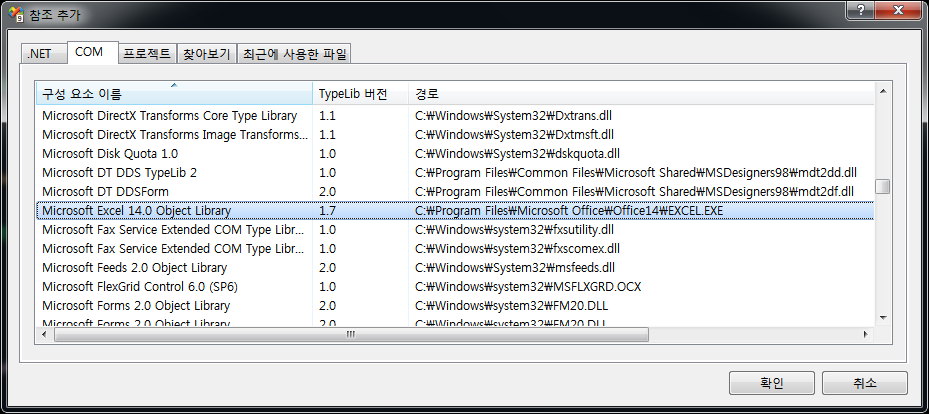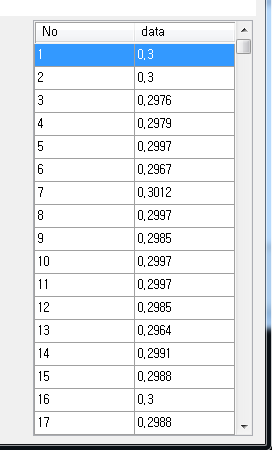윈도우 폼에서 Excel로 데이터 받아 내기 위한 소스 입니다.
Vs 2008 SP1 ,Net 3.5 p1 , Ms Office 2010 , Windows 7 Pro x86 환경 입니다
1. 솔루션탐색기->참조추가->COM->Microsoft Excel 14.0 Object Libary 선택 하여 참조 추가 
폼에서의 Data 확인 이름 : dataGridView1

폼에서 button1 을 누르면 해당 로직을 수행하게
using System.Reflection; using Excel = Microsoft.Office.Interop.Excel; private void Button1_Click(object sender, EventArgs e) { this.saveFileDialog2.FileName = "저장할파일이름"; this.saveFileDialog2.DefaultExt = "xls"; this.saveFileDialog2.Filter = "Excel files (*.xls)|*.xls"; this.saveFileDialog2.InitialDirectory = "c:\\"; DialogResult result = saveFileDialog2.ShowDialog(); if (result == DialogResult.OK) { int num = 0; object missingType = Type.Missing; Excel.Application objApp; Excel._Workbook objBook; Excel.Workbooks objBooks; Excel.Sheets objSheets; Excel._Worksheet objSheet; Excel.Range range; string[] headers = new string[dataGridView1.ColumnCount]; string[] columns = new string[dataGridView1.ColumnCount]; for (int c = 0; c < dataGridView1.ColumnCount; c++) { headers[c]=dataGridView1.Rows[0].Cells[c].OwningColumn.HeaderText.ToString(); num = c + 65; columns[c] = Convert.ToString((char)num); } try { objApp = new Excel.Application(); objBooks = objApp.Workbooks; objBook = objBooks.Add(Missing.Value); objSheets = objBook.Worksheets; objSheet = (Excel._Worksheet)objSheets.get_Item(1); for (int c = 0; c < dataGridView1.ColumnCount; c++) { range = objSheet.get_Range(columns[c] + "1", Missing.Value); range.set_Value(Missing.Value, headers[c]); } for (int i = 0; i < dataGridView1.RowCount - 1; i++) { for (int j = 0; j < dataGridView1.ColumnCount; j++) { range = objSheet.get_Range(columns[j] + Convert.ToString(i + 2), Missing.Value); range.set_Value(Missing.Value, dataGridView1.Rows[i].Cells[j].Value.ToString()); } } objApp.Visible = false; objApp.UserControl = false; objBook.SaveAs(@saveFileDialog2.FileName, Microsoft.Office.Interop.Excel.XlFileFormat.xlWorkbookNormal, missingType, missingType, missingType, missingType, Microsoft.Office.Interop.Excel.XlSaveAsAccessMode.xlNoChange, missingType, missingType, missingType, missingType, missingType); objBook.Close(false, missingType, missingType); //Cursor.Current = Cursors.Default; MessageBox.Show("Save Success!!!"); } catch (Exception theException) { String errorMessage; errorMessage = "Error: "; errorMessage = String.Concat(errorMessage, theException.Message); errorMessage = String.Concat(errorMessage, " Line: "); errorMessage = String.Concat(errorMessage, theException.Source); MessageBox.Show(errorMessage, "Error"); } } } |